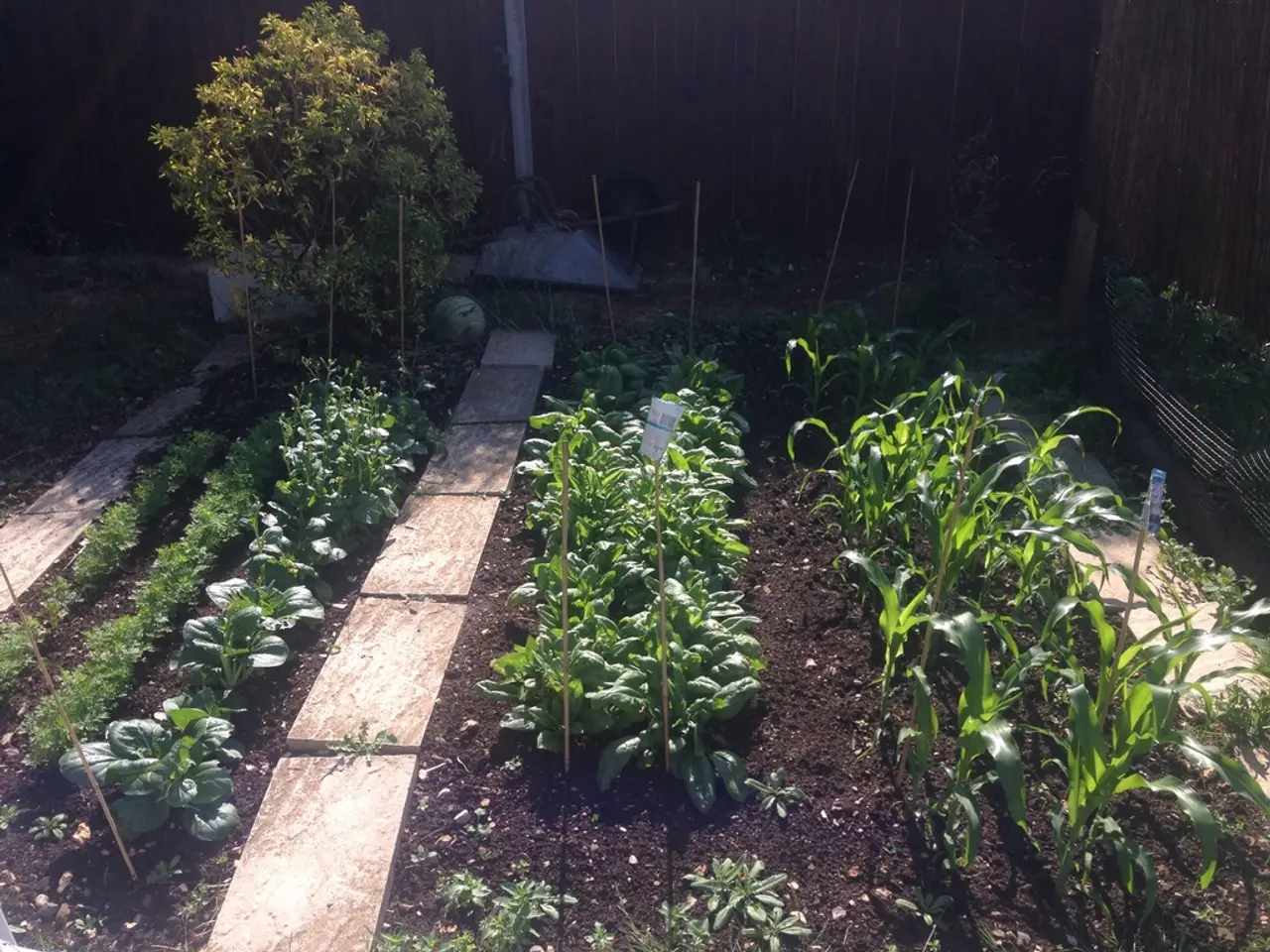Guide for Pea Cultivation: Steps to Successfully Grow Peas
Growing your own peas at home can be a rewarding experience, and with our comprehensive guide, you'll be well on your way to enjoying fresh, homegrown produce. Here's what you need to know to successfully grow different varieties of peas.
### Planting Depth and Spacing
Pea seeds, medium-sized and easy to handle, should be planted about 1 to 1.5 inches (2.5 to 3.8 cm) deep. This depth ensures seeds have access to sufficient moisture and nutrients without being buried too deep for the seedlings to emerge[4]. Space pea plants 4 to 6 inches (10 to 15 cm) apart to allow for good air circulation, reduce disease risk, and give plants room to grow[1].
### Soil Conditions
Peas prefer soil that drains well to prevent root rot but retains enough moisture for steady growth[3]. Ideal soil pH for peas is neutral to slightly alkaline (around 6.0 to 7.5). Before planting, test your soil and amend it if necessary with lime to raise pH or sulfur to lower it. Enrich soil with organic matter such as compost or well-rotted manure to boost fertility[2]. Peas thrive in cooler weather, so opt for early spring or late autumn planting in temperate climates. The temperature for seed germination is ideally between 12°C and 21°C (54°F to 70°F)[3][1].
### Supporting Growth
Many pea varieties, such as sweet peas, are climbers and benefit from support like trellises, stakes, or netting to keep vines upright and promote healthy air circulation[1]. Companion planting with cucumbers, carrots, potatoes, and pest-repelling herbs like mint and basil can also help peas grow well. Avoid planting peas near alliums (onions, garlic), which inhibit pea growth[3].
### Watering
Keep soil consistently moist but not waterlogged. Water deeply once or twice a week depending on weather, targeting the base of plants to prevent leaf diseases[3]. Mulching can help conserve moisture and regulate soil temperature[2].
### Fertilizing
Since peas fix nitrogen naturally, avoid high-nitrogen fertilizers. Instead, supplement with a balanced fertilizer or organic compost before planting to ensure adequate phosphorus and potassium for root and pod development[2].
### Harvesting
Harvest peas when pods are plump but before they become tough. For shelling peas, pick when pods are fully rounded; for snap peas or snow peas, harvest pods young and tender[3].
### Storing
Store fresh peas refrigerated in breathable bags and consume within a few days for best flavor. For longer storage, blanch peas briefly and freeze in airtight containers.
### Problem Solving
Watch for pests like aphids, spider mites, and other unwanted visitors. Companion planting with herbs like mint can deter pests[3]. Diseases like powdery mildew and root rot can be prevented by avoiding overcrowding plants, keeping the area clean, and ensuring good drainage. Protect against excessive heat by planting in cooler seasons and providing partial shade if needed[3][1].
By following these detailed guidelines, you can grow healthy, productive pea plants with minimal problems, enjoying fresh peas right from your home garden. On average, you can expect to yield around 3kg of peas from a 3m row. To further protect your crop, consider covering it with horticultural fleece or fine mesh as soon as you transplant the seedlings or see them emerge to reduce the risk of pea moth. Peas have the best flavour if they're picked and used straight away, but they'll keep for a week in the salad compartment of a fridge.
Happy gardening!
Engaging in gardening, especially focusing on home-and-garden favorites like peas, can greatly enhance your lifestyle. By implementing proper planting depth and spacing, enriching the soil with organic matter, providing adequate support, maintaining consistent moisture levels, and carefully selecting harvest times, you'll be well on your way to savoring fresh, homegrown peas from your very own garden.





